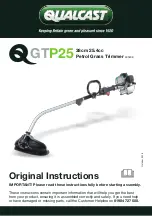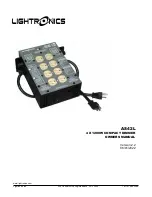
Helpful Hints for New Construction
By design, X10 (also known as PLC) equipment does not need much in the way of special
wiring. The following are six items we recommend for all homes with PLC installations:
1. Ask the builder or electrician to run the neutral wire to each wall switch location. This
wiring may be a code requirement or a regular practice in your area, but unless explicitly speci-
fied, it may get omitted. Most SwitchLincs and all KeypadLinc controllers require the neutral
connection.
2. Specify the installation of deep J-boxes in all locations where PLC switches, receptacles, or
transmitters will be used. While all PLC products fit in the spacing offered by all North
American electrical boxes, the deep models have extra working space and make the installa-
tion go a little easier. Deep boxes only costs a few cents more than normal depth models.
Look for single gang boxes that are 22cu or higher (cubic inches) and double gang boxes that
are 36cu or higher.
3. If the automation switch is dimming-enabled and is going to be controlling 400 watts or
more, do not place insulation around the wall box and consider using metal junction boxes.
Dimmers that control high loads will dissipate heat, which may be felt through the switch face-
plate. Metal boxes will more efficiently draw out the heat and spread it over all the surfaces of
the box. By keeping wall insulation a few inches from the box, free air will help move the heat
away.
4. Install a whole-house surge suppressor. Adding a good whole-house surge protector at the
breaker will help protect against costly damage to the PLC components and other delicate
electrical equipment.
5. Install a PLC phase coupler (signal bridge) or coupler-repeater (amplifier) at the incoming
electrical service. A common problem with PLC signals is getting the signals between the two
legs of electricity that service the home. A coupler-repeater is recommended for homes of
3,000 square feet or greater. Smaller homes will generally work well with a passive phase
coupler.
6. Work with the electrician to isolate non-automation loads. Ask the electrician to place the
non-PLC carrying lines on one of the two incoming lines. Having the kitchen and laundry appli-
ances plus the heating systems on one phase will help keep potential noise off the signal-car-
rying lines. He probably won't be able to accommodate 100% of the loads on one phase or
another, but an attempt should be made
7
2387(rev.Jan04-web version).qxd 1/30/2004 8:08 AM Page 7


























